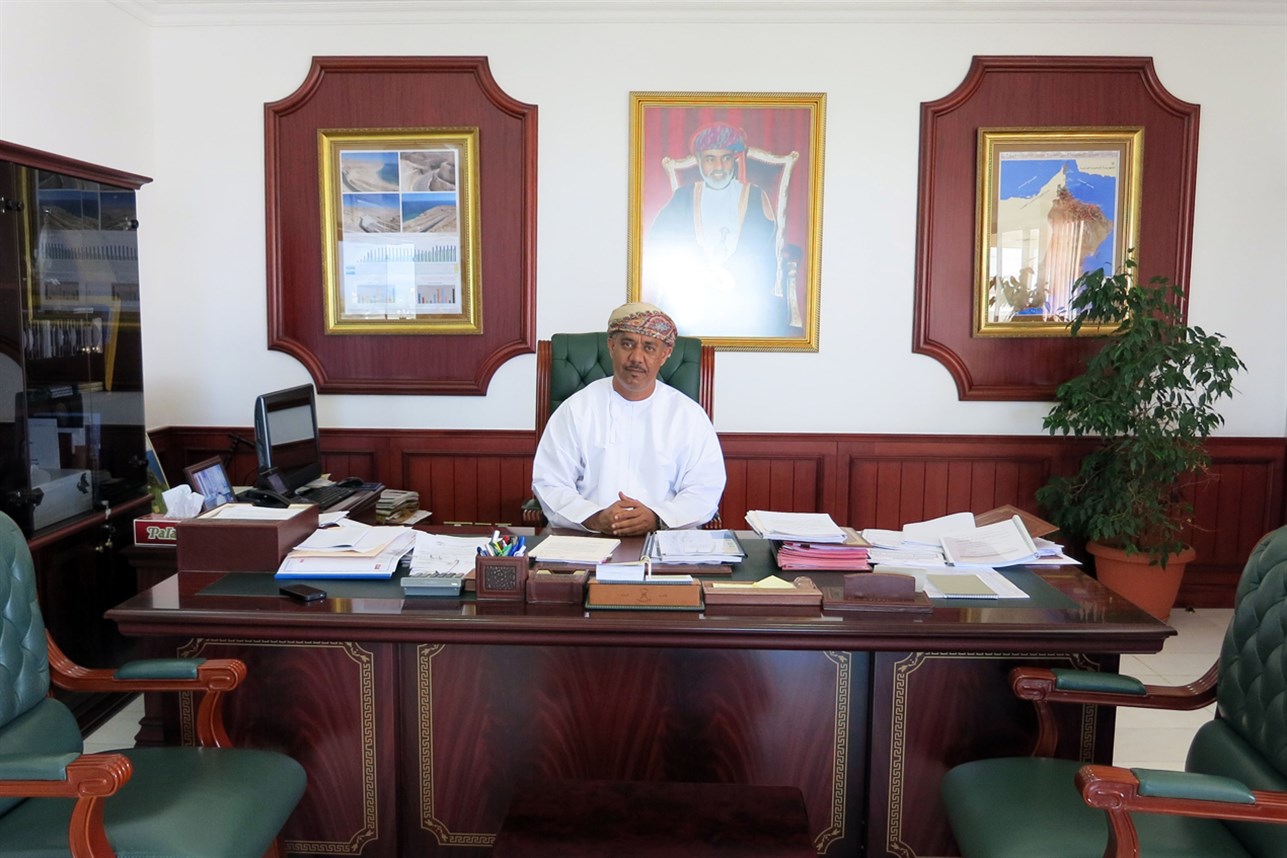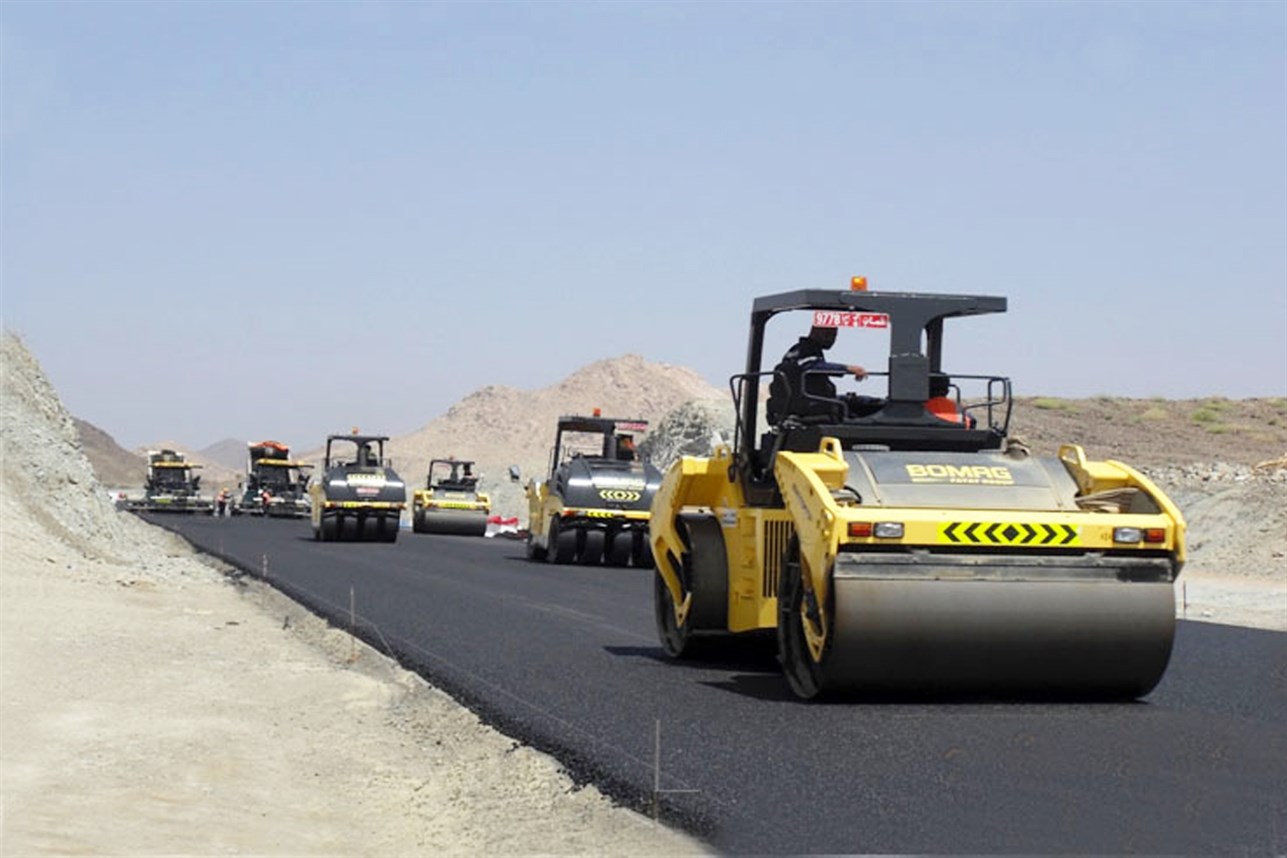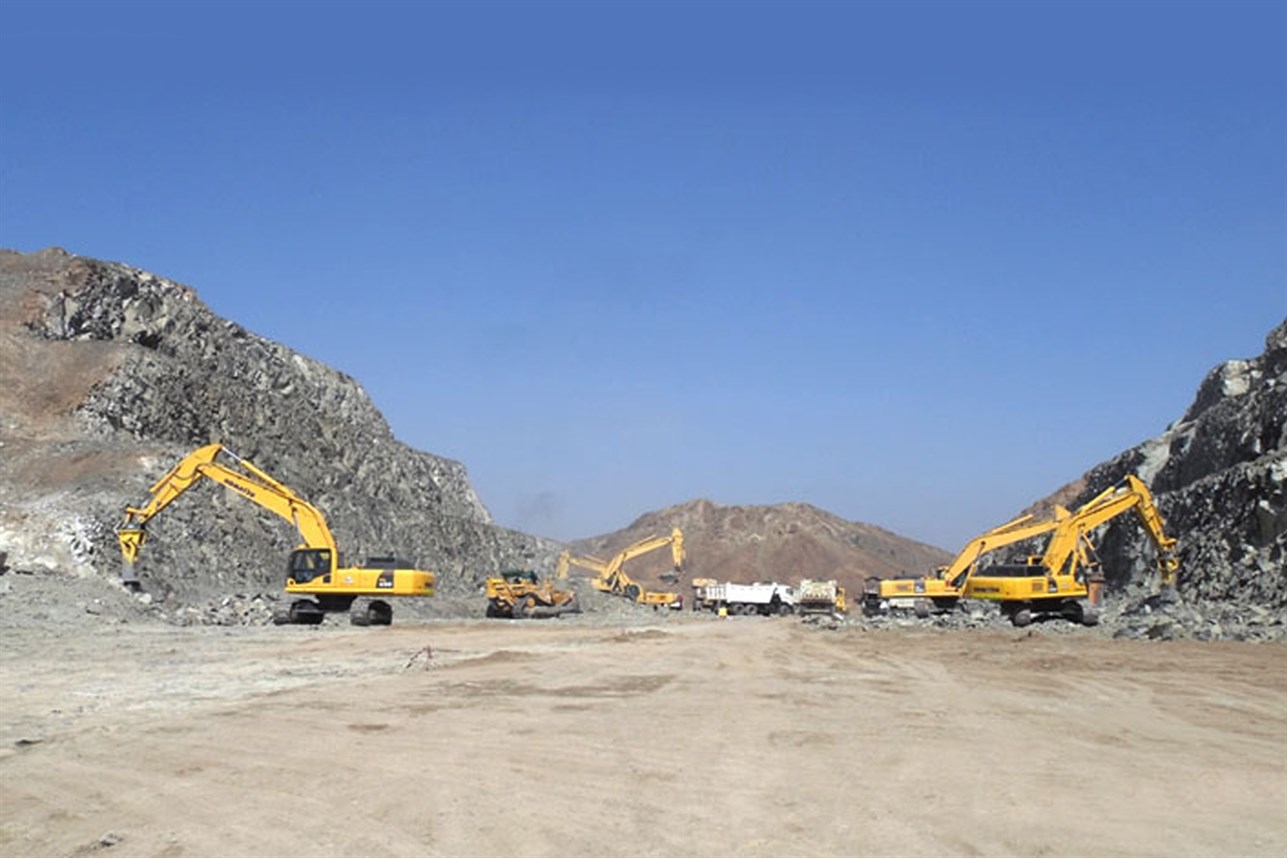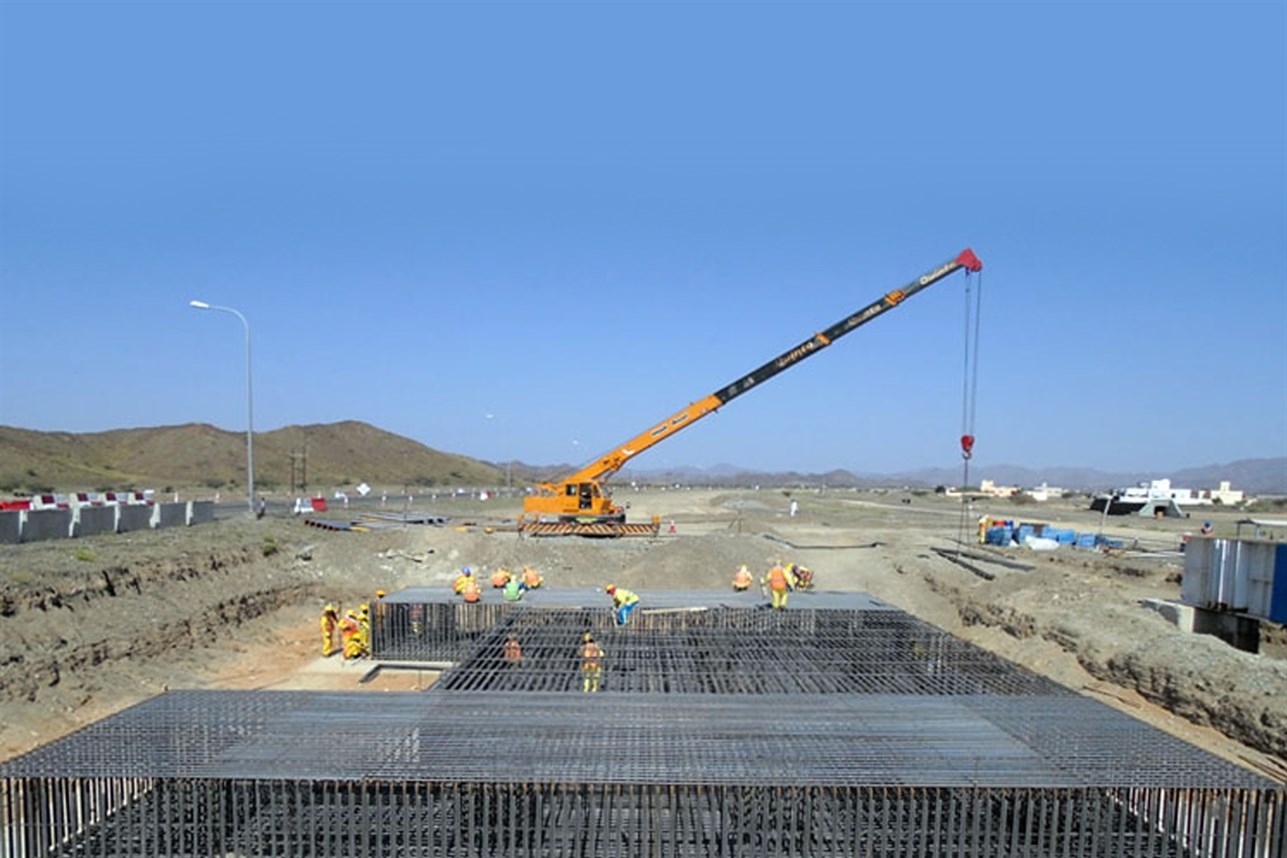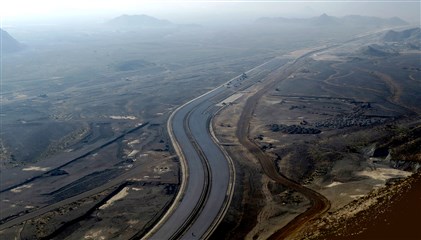
Date01.02.16
AuthorDar Oman and the Technical Coordination Department
CompanyDar Al-Handasah
LocationOman Middle East
As a follow up to Issue 7 article “On the road: Developing a dual-carriageway highway in Oman,” we flew to Muscat to meet with His Excellency Dr. Ahmed Mohammed Salem Al-Futaisi, Oman’s Minister of Transport & Communications. The Minister shares his thoughts on Oman’s transport sector, its challenges and peculiarities, and the growing importance of public transport.
Your Excellency, there are many developments in Oman’s transport sector under your tenure. What is the current state of the sector and your vision for it?
Oman’s economy is still reliant on oil and gas, and alternatives are needed. To that end, the transport and logistical sector is very promising, and our government is now concentrating on it. Our big goal is to become one of the top 10 countries worldwide in logistics by 2040.
The biggest change we’re planning for the sector is to evolve it from a mere service field for other sectors to an economically viable sector in its own right. To achieve that vision, we have to build bigger, more advanced infrastructure.
Firstly, Oman is developing five airports, two international and three regional, to the highest standard. These airports will connect the country internally and externally.
Also, we’re setting up six central commercial ports. These will connect Oman to the world and make it a gateway for neighboring economies of the Gulf, countries bordering the Indian Ocean, Africa, and others.
Thirdly, our road network is being upgraded. While Oman has traditionally occupied top positions in global rankings, we’ve nevertheless been modernizing the highways which link the muhafazat (regions). This step has been economically significant, linking the ports, free zones and other areas.
Finally, we’re participating in the Gulf train project, a project that will link all the Gulf countries from Kuwait to Oman. The railway will be linked to our ports and will transform the Sultanate into a gateway to the Gulf.
What are some challenges faced by the Sultanate’s transport sector?
We enjoy a strategic geographical position, with improving infrastructure and warehouses, but we need a robust air transport sector. The air freight sector is in need of more infrastructure, but is on track.
The other challenge is Oman’s volume of trade. We are too reliant on exports, and the amount of our internal goods is not large. That’s why we want to better exploit our geographical location, exchange more goods and connect with the countries of the world. . . . The third most important challenge is the speed and facility of procedures. We’d like to enlist technology and get requests processed more swiftly in order to facilitate trade.
Financing all these measures will always depend on our oil production capacity; our development follows suit.
Oman is known for its mountainous terrain. This translates into a higher cost for road works than neighboring countries’ road works and tunneling. Are there any tunneling projects in the works?
Mountains, deep wadis (valleys) and even sand, all present a challenge and push up the cost of roadwork in Oman. Occasionally, we receive criticism about the expense of projects. But our country’s geography is more difficult for road building than other countries’. There should be a fair comparison.
As for tunneling, the concept is catching on. For a while, we preferred the mountain-cutting method instead of the tunnel approach, but now, the Masendem/Khassab highway will include a number of tunnels. The upcoming train project also includes a number of tunnels.
How do roads help develop communities and cities?
Every kilometer of road opens up economic, touristic and developmental opportunities. Once the road is born, the development follows.
Roads also open up new areas. Oman is a large country, but areas suitable for citizens are limited. Roads like the new Batin and Sharqiya highways reach places that hadn’t been populated.
When you build a highway, how do you assess its impact?
We have many reasons for developing a road: industrial, economic, residential, and others. If there are settlements, even small ones, the government doesn’t tarry in providing a road for them. This has helped keep settlements rooted and far from cities like Muscat and others. In some cases, the Sultanate has built roads for just four or five homes.
Finally, on a wider note, what is the Ministry doing for public transport?
We’re paying more attention to it. Traffic in our cities is on the rise. For a while, we focused on roads and bridges, and paid less attention to public transport. Muscat is a very good example. But circumstances are demanding that we give public transport its due.
The transition to public transport will take time. People here feel attached to their cars. Fuel is subsidized. So, the positives of public transport will have to be emphasized: comfortable seats with WiFi, transport that can skip traffic through special lanes. . . .
We’ve started a strategic study and are also considering a trial public transport form in Muscat, and plan on studying the public reception to it. Light transport (tram) is another option under study in Muscat. Overall, I think public transport will definitely develop in the coming years.

The second leg of our interview was with Oman’s Undersecretary of Transport, His Excellency Engineer Salim bin Mohammed Al-Nuaimi, who provided an insightful perspective on the road transport sector.
What is the Sultanate’s strategic vision for the dualling of Bidbid-Sur?
There has been a significant increase in car ownership and traffic demand in the Sultanate over the last years. As such, Royal Oman Police records indicated that about 125,000 vehicles were registered annually over the last three years. This increases the number of vehicles on the road, and contributes to congestion and safety issues on the road network.
Alleviating traffic congestion, and improving safety and driving conditions on the road are a prime target of our mission in the Ministry of Transport & Communications. For this reason, the current five-year plan (2011-2015) includes adding many roads for new construction, upgrading existing roads and dualizing existing roads. Some projects have already been completed and opened to traffic.
We still have more than 80 ongoing projects with a total cost of about RO 2,600 million. Yet, the construction will commence in some other projects this year. Needless to say, the current five-year plan includes megaprojects such as Batinah Expressway and Bidbid-Sur Highway, which require massive earthwork, many wadi (valley) bridges and interchanges to achieve the 130 km/h design speed. These costly elements become valuable assets that will require proper operation and optimum management.
What is the importance of Bidbid-Sur Highway?
Bidbid-Sur Highway is one of the major roads in the Sultanate. It is a very essential road to Al-Dakhiliyah Governorate, as well as North and South Sharkiya Governorates, and the wilayats (provinces) in these governorates. The road is about 250 km long and is the main corridor to Sur, Ras Al-Had, Al-Ashkhara, Al-Kamel, and Al-Wafi. It is expected to contribute to the trade and economic activities in the whole area.
Why is there a need for dualizing this road?
The dualization is required because the two-lane single carriageway cannot accommodate the current high traffic demand. Furthermore, the congestion and long queues observed on the single carriageway force some rush drivers to execute unsafe overtaking, resulting in dangerous situations and probably traffic accidents. For this reason, the dual carriageway is designed for a speed of 130 km/h. Additionally, all safety measures have been taken into consideration during design.
Was there a need for the three lanes in each direction?
The analysis and forecast of traffic demand determined the number of lanes required to serve the traffic at an acceptable level of service during the design period, which is about two years.
What are the main features of the dualization alignment?
The alignment of the new dualization follows the existing road in some stretches. However, in areas where the existing road is located along wadis like Wadi Al-Aq, the alignment is shifted outside the wadi to avoid the traffic disruption due to wadi flows in rainy seasons.
In addition, in populated areas such as Ibra Town, the alignment has been shifted outside the developed area to form a bypass of the main town. In particular, the stretch of the dualization forming the Ibra Town Bypass is about 18 km and has been completed and opened to traffic. Also, interchanges have been considered at many crossroads along the road to facilitate traffic interface and safe turning movements.
Were there any particular obstacles encountered during the construction of this dualization?
The magnitude of work on this project is tremendous and is beyond the capability of one contractor. For this reason, the project was divided into four sections, and each section was awarded to one contractor. However, some sections encountered a massive cut reaching 120 m in height, which requires a geological study, designed blasting and implementation of proper cut slope stability measures. We have appointed exceptional consultants to supervise the construction work and assure the quality control.
When do you expect to complete the construction of this dualization?
The completion date as per construction program is about mid-2016. However, any completed stretches can be opened before that. As I mentioned, Ibra Bypass, which is part of this dualization, has already been opened to traffic.
Related Projects

